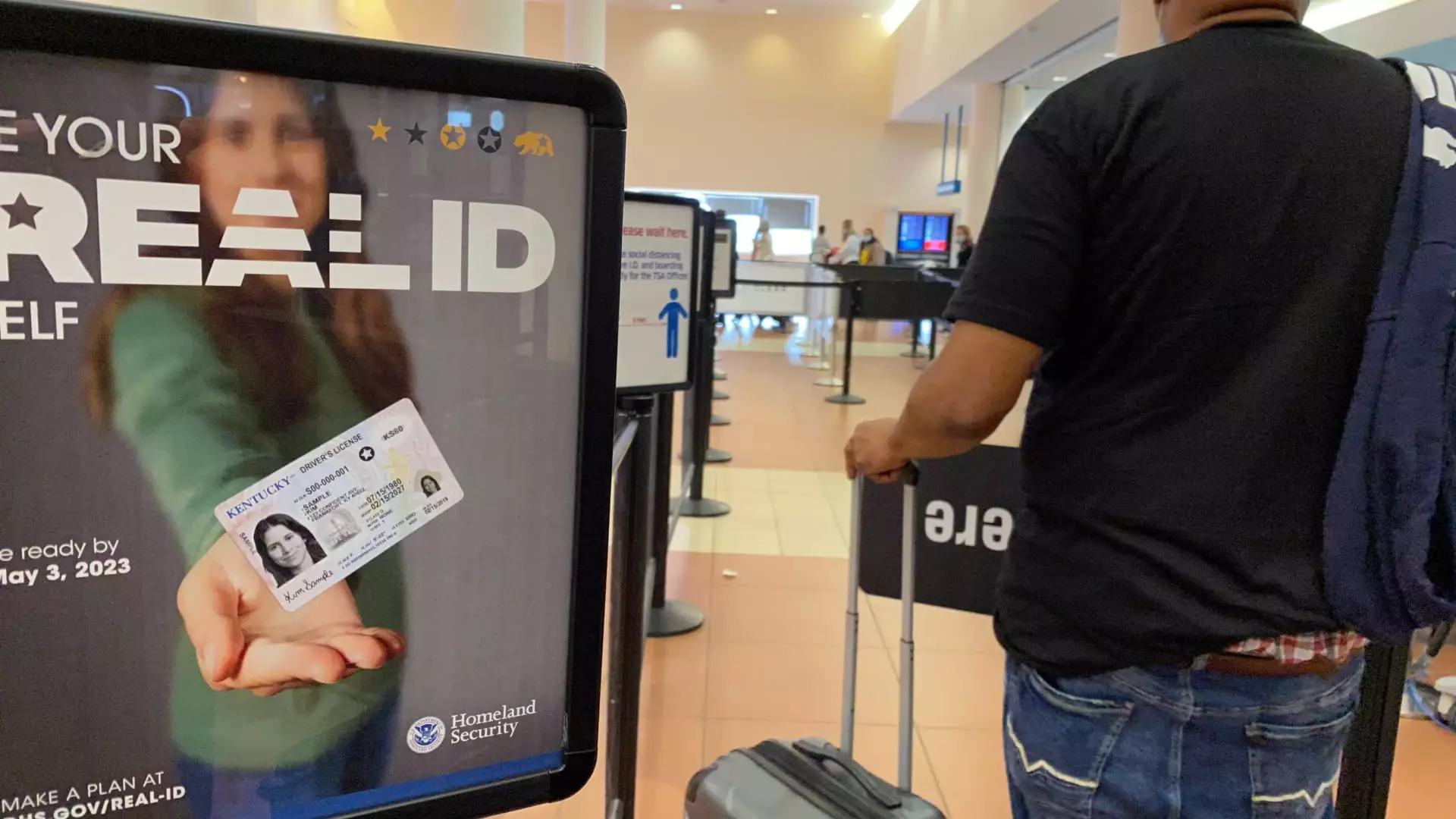As the countdown to May 7, 2024, beckons, travelers across the United States should brace themselves for impending chaos at airport checkpoints. The federal government is rolling out its long-delayed Real ID enforcement, and while the intention is rooted in enhancing security post-9/11, the execution is fraught with peril. Rather than a seamless transition to a more secure form of identification, this initiative risks creating unnecessary bottlenecks and confusion. With only a few months left before this deadline, the scramble to obtain a compliant identification card is only intensifying, thanks to a lack of resources and guidance.
The Transportation Security Administration (TSA) claims that 81% of people already possess Real ID-compliant IDs, but this statistic varies widely depending on location. Imagine arriving at an airport only to discover that the beautiful golden star glimmering on your ID card is absent—mass panic would ensue. The potential for missed flights, missed connections, and spiraling travel costs is highly concerning.
Too Little, Too Late: An Urgent Call to Action
John Essig, the federal security director at NYC’s airports, has urged travelers to “make your appointments now”—an alarmingly reactive statement considering many states are already facing appointment bottlenecks and extended wait times at motor vehicle departments. How could this be the best path forward? The government has been aware of the impending deadline for years, yet it’s left many citizens scrambling to comply just a few months before the enforcement date.
State officials have placed signs in airports for years, publicizing this requirement, which raises an important question: Why didn’t the federal government take proactive steps to facilitate compliance sooner? The urgency feels manufactured rather than organic, creating a high-stress environment for the very citizens who are trying to do everything right.
The Risks of Inaction: What Happens If You’re Not Compliant?
Travelers who find themselves without a compliant ID post-deadline should prepare for extensive delays. The TSA has explicitly warned that they may face “additional screening” and, more alarmingly, the possibility of being turned away. This isn’t just a minor inconvenience; it’s a significant deterrent for countless citizens who rely on air travel for work and family obligations.
It’s a disturbing reality that the government can halt your mobility over an ID issue, and this raises questions about the very fabric of travel in a post-pandemic world. The idea that travelers could be allowing extra hours—but still end up being denied access to flights—is frankly ludicrous. This paints a troubling picture of how bureaucracies are failing to genuinely facilitate rather than complicate public life.
The Role of Airlines: Are They Doing Enough?
Many airlines, including Frontier, insistently remind their passengers of this new regulation through emails and blinking banners on websites. However, the question remains: Is this enough? Awareness does not equate to readiness. Airlines should bear some responsibility for ensuring that their customers are not left in the dark about such critical matters. What good is a reminder if the infrastructure to support compliance is dramatically lacking?
The commitment to accountability needs to be extended beyond beneath corporate marketing. Airlines must be proactive stakeholders in this process, helping to craft solutions instead of waiting passively for the consequences to hit their bottom line.
A Silver Lining or a Step Backward for Security?
While the intention behind the Real ID Act is to add a layer of security and prevent fraud, it’s essential to question whether the tactics employed are genuinely effective, especially considering the history of manipulation and fraudulent procurement of IDs prior to the Act’s inception. Is it enough to have a gold star on a document to ensure airport safety genuinely? The narrative of enhanced security needs to evolve with the realities faced by citizens beyond mere compliance, urging a deeper conversation on the efficacy and ethics of these systems in practice.
As we move towards this deadline, it’s time for a candid assessment of the shortcomings and practical implications arising from the Real ID initiative. While government officials may argue that these measures are in the best interest of national security, they must also recognize and address the human aspect of such sweeping changes. To avoid creating a climate of chaos come May 7, prioritizing accessibility and awareness should have been at the forefront of the conversation long ago.

